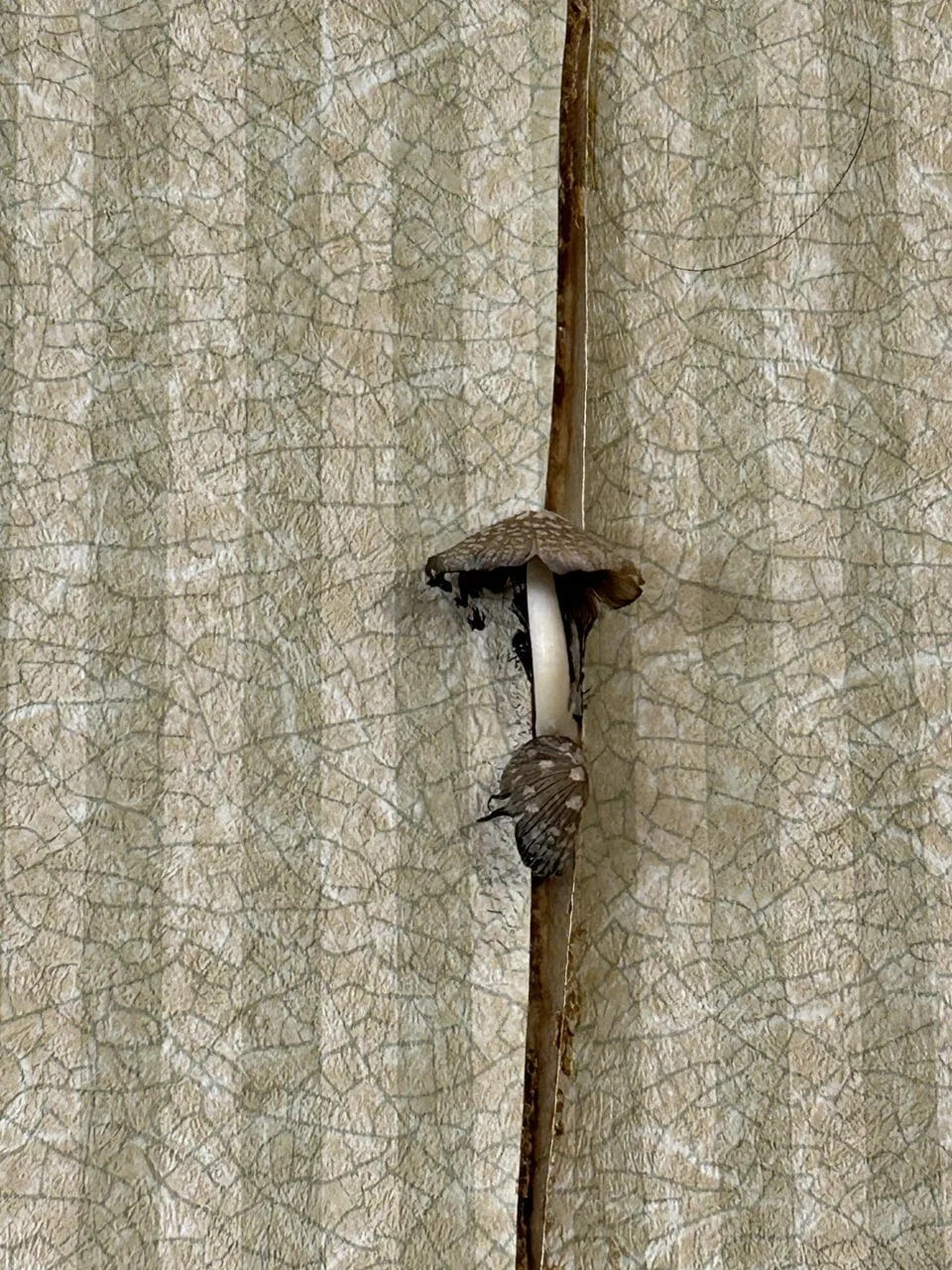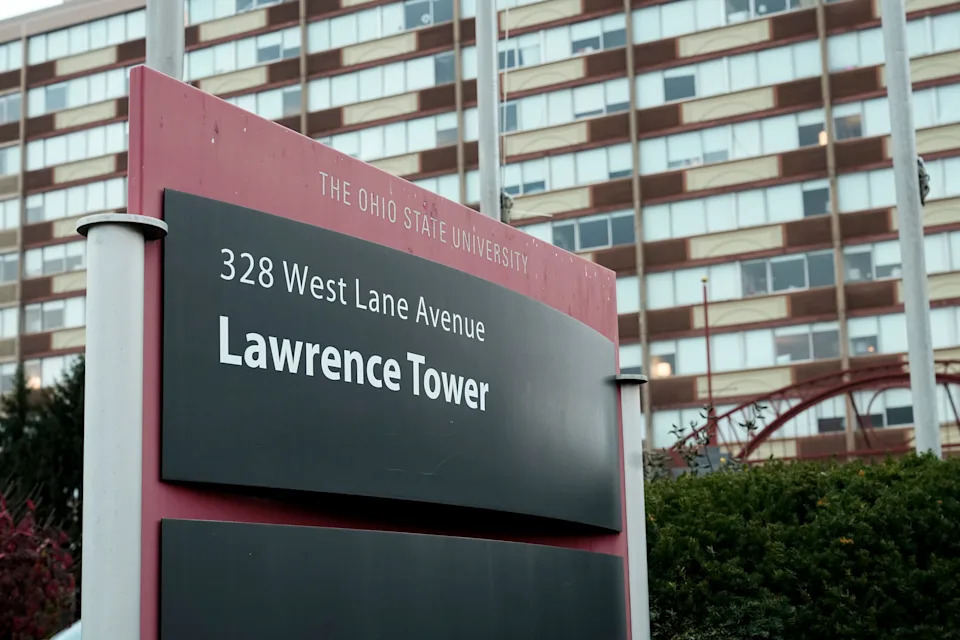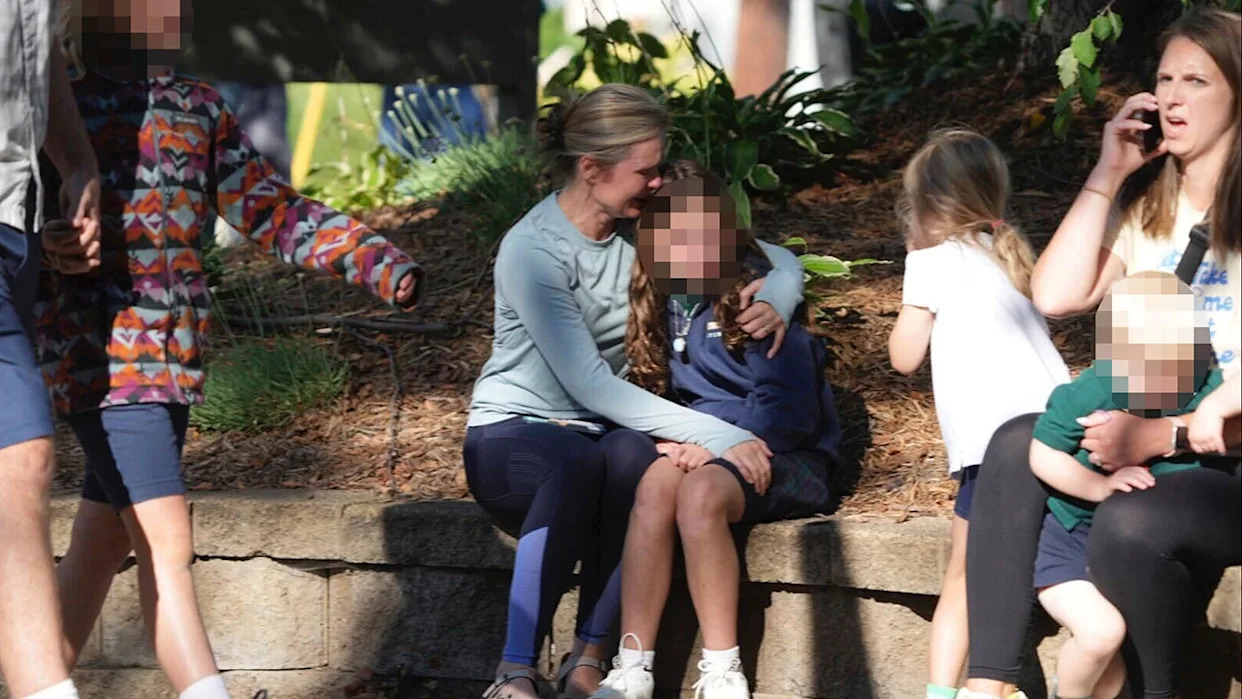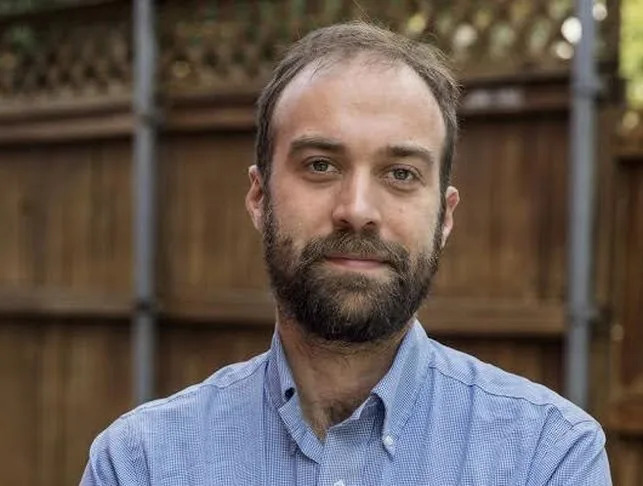Nine months after mold and mushrooms drove roughly 500 Ohio State University students from their campus dormitory mid-semester, the future of Lawrence Tower remains uncertain.
Ohio State officials evacuated all student residents from the former Holiday Inn-turned-residence hall on Lane Avenue in November 2024 after drywall damage from a water leak caused mold and mushrooms to grow behind the wallpaper of several dorm rooms. Ohio State spokesperson Dave Isaacs told The Dispatch that Lawrence Tower will remain closed to students this school year.
Fellow university spokesperson Ben Johnson said in an email the university has made "no long-term decisions" about the building and couldn't share any additional information about when a decision regarding the building's future might be made.

Lawrence Tower has over 130 rooms, each housing one to four students. The university webpage with information about the dorm is no longer accessible, but The Dispatch previously reported that most of its rooms were Rate 1, which cost $5,045 a semester as of last fall. Today, the price of Rate 1 dorms increased slightly to $5,196 per semester, according to the university's housing website.
Johnson said Ohio State's enrollment for this school year was not affected by Lawrence Tower's closure.
In November 2024, prior to Lawrence Tower's evacuation, several parents of students living there hired Mold Mentor, a Columbus-based mold remediation company, to test 28 of the dorm's rooms — 27 of which came back positive for high levels of mold.
Later that month, Ohio State hired a university-contracted vendor to conduct its own air-quality tests through Ohio State's Office of Environmental Health and Safety.
Ohio State announced Nov. 26, 2024 on its "Lawrence Tower Frequently Asked Questions" webpage that it had completed the dorm's air-quality testing through Eurofins CEI, Inc., and "so far, the majority of rooms are within the expected range when compared to the immediate outdoor environment."
According to the announcement, the Environmental Health and Safety department was processing the results while Ohio State analyzed each room individually and continued to work with Terracon — an engineering firm that offers environmental consulting services — and Columbus Public Health on recommended next steps.
The Dispatch filed a public records request with Ohio State to receive a copy of Eurofins CEI's test results Aug. 26 and has not received the records at the time of publication.

What's the status of the lawsuits against Ohio State?
On Jan. 13, parents of more than 30 Ohio State students filed two concurrent lawsuits against the university.
One, filed in the Franklin County Common Pleas Court, alleges that the university violated the Ohio Consumer Sales Practices Act, which protects consumers from unfair business practices.
Plaintiffs claim that when it comes to campus dormitories, Ohio State is a "supplier of student services to a student consumer in a consumer transaction," according to the amended court complaint. As such, its housing transactions with students fall under the OCSPA, the complaint says.
Plaintiffs allege that Ohio State violated the OCSPA by falsely representing that Lawrence Tower was safe both at move-in and after multiple repairs to individual rooms, in addition to concealing the mold despite knowing it was unsafe. Plaintiffs are seeking damages of at least $1,000 and up to $5,000 per student, according to the complaint.
Ohio State filed motions to dismiss the case, the first on March 13 and the second on April 7, after the plaintiffs submitted an amended complaint.
Isaacs said the university doesn't comment on pending litigation.
Jedidiah Bressman, an attorney representing the plaintiffs, said the Franklin County case is waiting for the judge to issue a decision about the university's motion to dismiss. Bressman said he doesn't know when that decision will be made.
If the motion is denied, the case will move forward. If the motion is granted, the Franklin County case would be thrown out, though parents could appeal. Even then, plaintiffs could still have another legal avenue in play.

A second lawsuit was filed in the Ohio Court of Claims, which handles lawsuits against state entities like Ohio State. In this case, plaintiffs' claims revolve around alleged negligence, nuisance and fraud by Ohio State for failing to fix the dorm's mold problem and violating its guarantee that students have the right to a safe living environment, according to the original court complaint.
In this case, plaintiffs are seeking damages of at least $25,000 and up to $250,000 per plaintiff, according to the complaint.
On Aug. 25, the Court of Claims held a status conference with both parties to discuss the concurrent case in Franklin County. Because Ohio State's motion to dismiss is still pending, the court scheduled another status conference for Nov. 24 to discuss the progress of both cases.
Ohio State also filed a motion to dismiss in the Court of Claims case, though Bressman said the motion is limited to some issues. He said if the Court of Claims grants the university's motion, the case would still go forward on its breach of contract claim, which alleges Ohio State violated both its educational services and landlord-tenant agreements with plaintiffs.
Reporter Emma Wozniak can be reached at [email protected] or @emma_wozniak_ on X, formerly known as Twitter.
This article originally appeared on The Columbus Dispatch: Updates on OSU Lawrence Tower: closed to students, mold testing, lawsuits








Comments